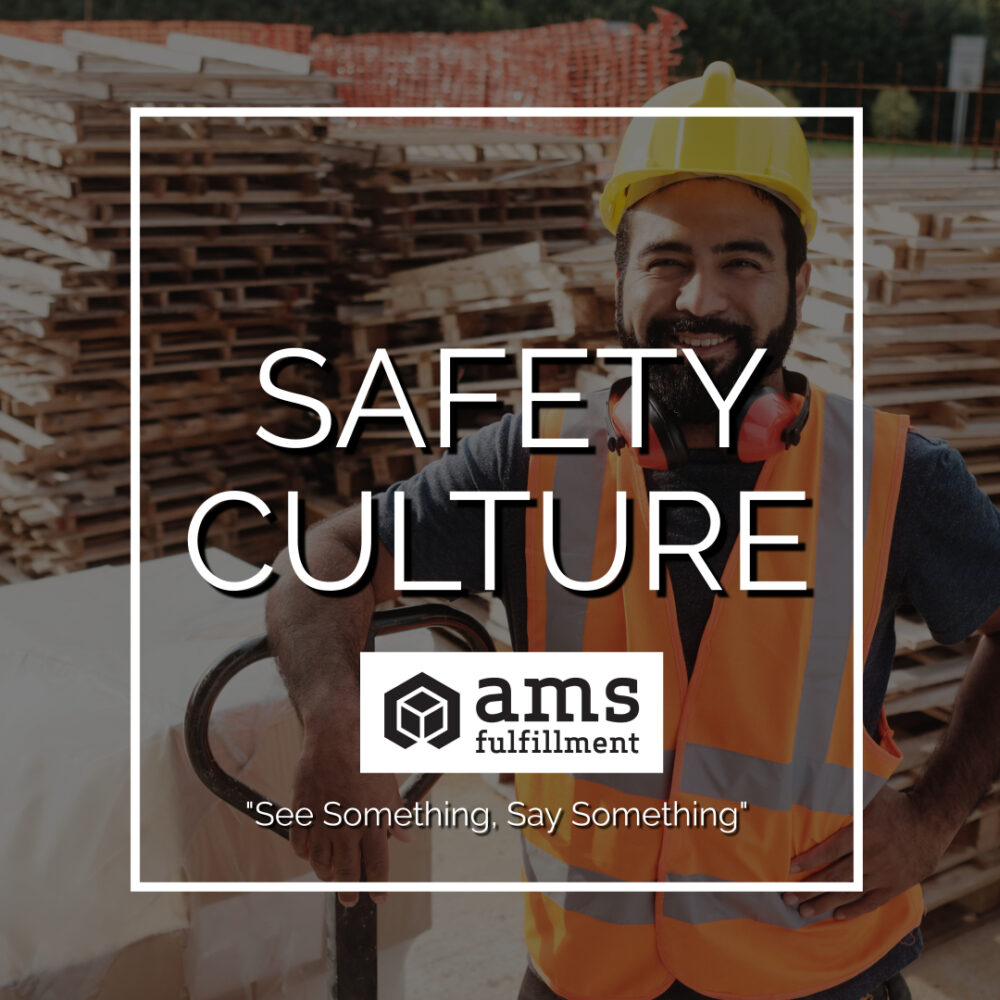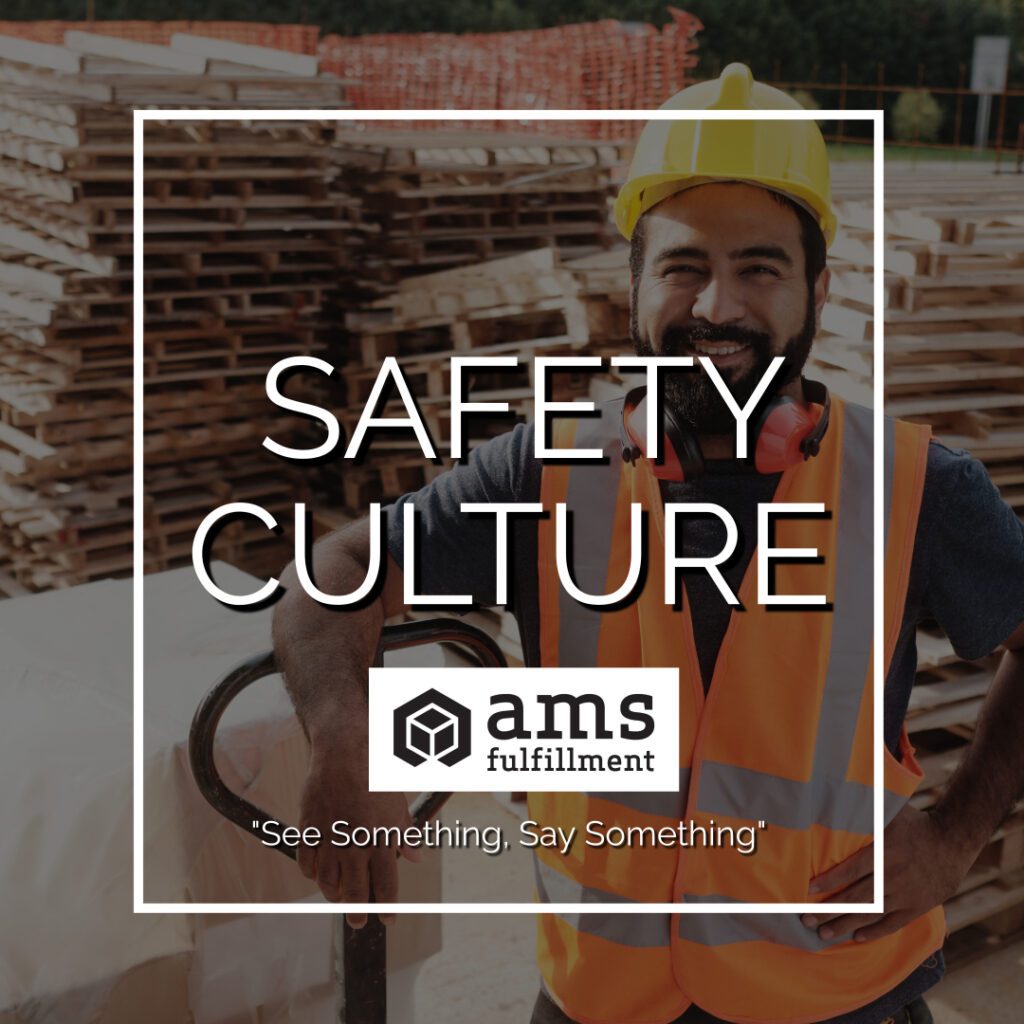
As we have shown in past blogs, AMS has a great safety record. For example, at AMS West we have had, in these 6 months of 2023, a lost time injury rate of 2 individuals among 444 full-time employees. This is significantly below the average.
In past months we have said that safety means a lot to AMS because B Corporations consider their employees stakeholders. What does it actually mean to say that employees are stakeholders? What it means to us is employee safety, health benefits, free education for training and advancement, and hiring individuals from the community who might otherwise have difficulty finding employment. We want to treat our employees right, and a part of doing that is considering them when making business decisions – they have a stake in the business.
Employee Safety – OSHA Standards
In warehouses, injuries happen most often in certain vulnerable areas. The areas include 1) manual handling, 2) hazardous chemicals, 3) heavy equipment, 4) machine entanglement and 5) conveyor belts.
Manual handling refers to employees physically handling packages and receiving injuries due to physical strain. In order to prevent injuries in manual handling, the training team teaches employees ways of handling items safely, i.e. don’t attempt to lift a package that is too heavy for you and also try not to stoop, reach too far or twist your body in order to handle a package. All employees who are required to lift and handle packages are trained in handling.
The next item is hazardous chemicals. The rules with regard to any materials that are considered hazardous is first of all to store these materials in cool, well-ventilated areas, marked with “Caution” signage. Employees who handle such materials must wear personal protective equipment, and most importantly, they receive specific training on how to handle anything that could be considered hazardous.
The next item is heavy equipment. Heavy equipment refers to the operation of forklifts and injuries that could result from forklift accidents. These injuries can be very serious and that’s why forklift training and safety is a high priority at AMS. AMS carefully maintains its equipment, provides PPE and follows the OSHA guidelines with regard to all protocols, including communication when forklifts are in operation.
The fourth item where injuries happen is with machine entanglement. Machine entanglement can also be quite serious. This incident would occur for example if an employee’s shirt sleeve got caught in machinery or sorting equipment or a conveyor belt. To avoid this occurring AMS employees are required to wear appropriate clothing and they are carefully trained, once again according to OSHA guidelines. AMS also maintains and inspects the machinery to prevent accidents.
Item number five is conveyor belt accidents. These injuries would be similar to machine entanglement, such as getting a finger or hand caught in the belt. The ways to prevent conveyor belt accidents have to do with keeping the conveyor belt speed right for the employee, allowing the employee time, and not overloading the belt. AMS conveyor belt loading and speed are very much attuned to avoid any injuries. Also, safety training is done here as well, according to OSHA guidelines, and the belts are well maintained.
B Corporations – Employees as Stakeholders
Following OSHA standards and training employees according to these standards is very specifically warehouse safety related, and OSHA training is effective. The B Corporation standards take into account employee satisfaction as well as safety, as B Corporations consider employees stakeholders in the company. Below is a report from Samantha Hicks, Corporate Culture and Org. Development Business Partner, on the B Corp standards as related to safety.
As a B Corporation, a distinct impact area that presents AMS’ key stakeholder group is our workers. AMS Safety Program evaluates our company’s contribution to health and safety.
Safety Goal:
helps demonstrate that our business is socially responsible
- protects workers
- helps maximize the productivity of workers
- enhances employees’ commitment to the business
- builds a more competent, healthier workforce
- reduces business costs and disruption
- enables business to meet OSHA expectations
Initiatives
Ensuring structures are appropriate for the work being carried out- employees have adequate workspace, lighting, ventilation, the offices are located in a well-built structure.
- Labeling hazardous chemicals and equipment highlighting proper use, and if possible, replacing them with safer ones.
- Providing protective gear for anyone handling hazardous equipment.
- Promoting awareness of the workplace Occupational Safety and Health policies through training workers, managers and supervisors, providing copies of the policies to workers, posting the policies and procedures publicly where workers can easily access.
- Ensuring machines are properly maintained to avoid unnecessary injuries. Provide training on new machines before they are used.
- Training on first aid, provision of on-site clinics or subsidized health care can better improve employee health. Where employees work with hazardous materials/chemicals, employees should undergo annual checkups.
Employee Incentives
Monthly Safety monetary awards (including company lunch) for no lost time injuries, submitting safety checklist, and team training logs.
Safety Matters at AMS
Thank you Samantha for your report. As readers can see, safety matters in a warehouse. There is equipment that could cause injuries with improper use, and there are instances where communication and awareness is vital. Preventing injuries is a team effort and we train according to OSHA standards. We also go above and beyond with B Corporation standards, caring for employee health and wellness. Our employees are vital to the success of the business and we appreciate them as employees and as human beings.




